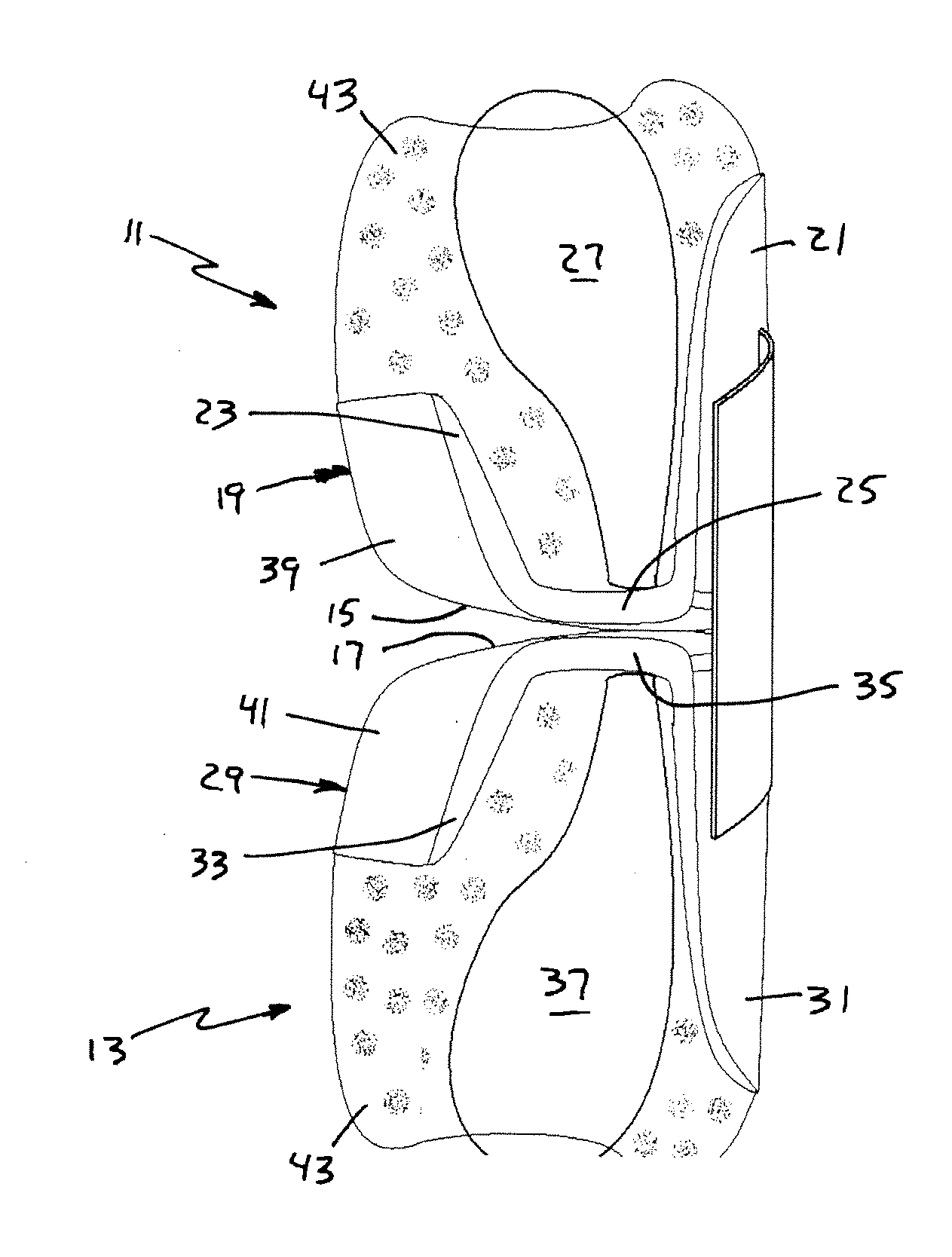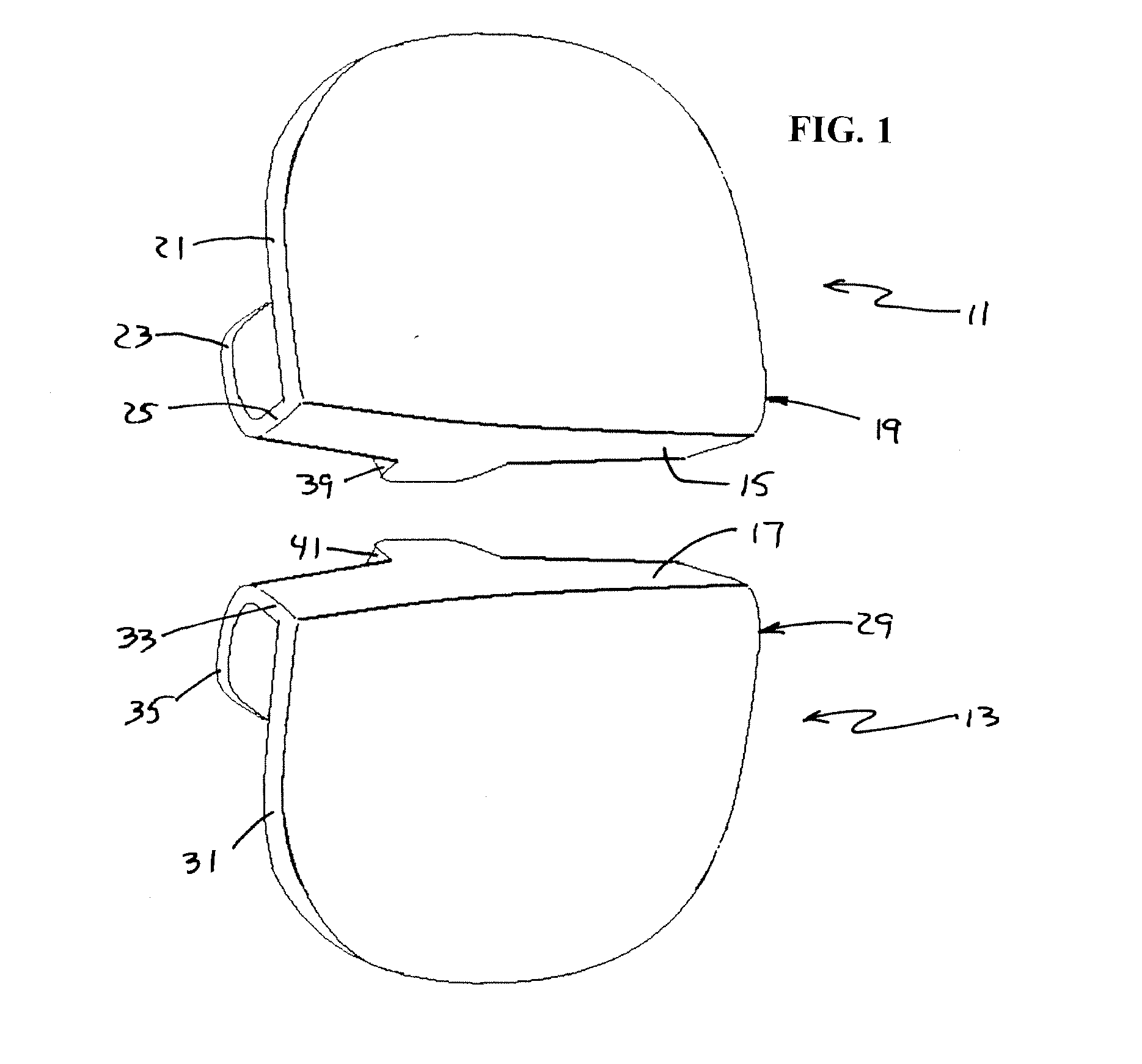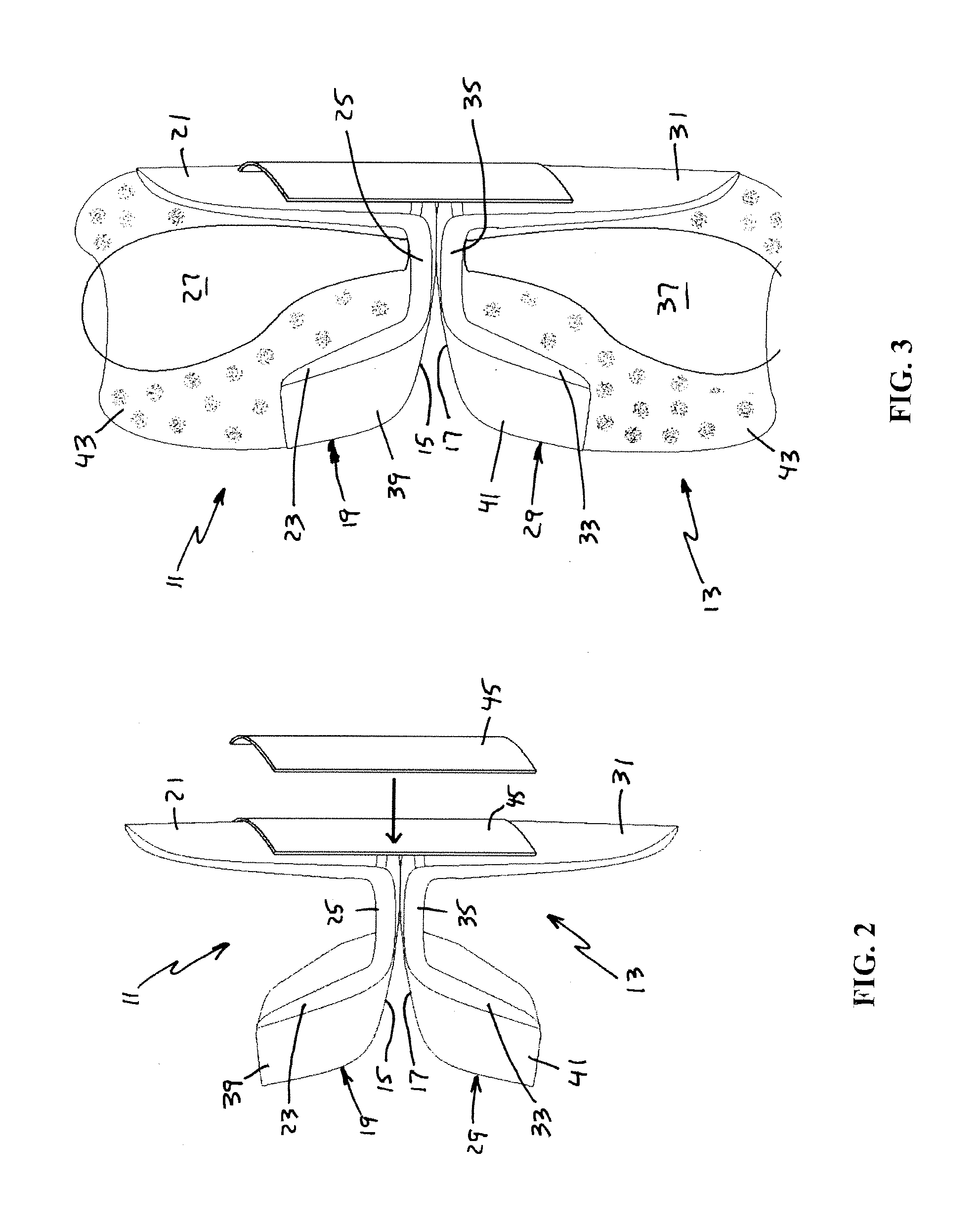Method and apparatus for diagnosing temporomandibular disorders
a technology of temporomandibular disorders and diagnostic methods, applied in the field of intraoral devices, can solve the problems of restricting an individual's ability to think clearly and function effectively, affecting many people every day, and the majority of the muscles of the human head are not strong enough to elicit the type of pain and discomfort, so as to reduce the intensity of clenching of the subject's temporalis muscles, and relieve tension headaches
- Summary
- Abstract
- Description
- Claims
- Application Information
AI Technical Summary
Benefits of technology
Problems solved by technology
Method used
Image
Examples
Embodiment Construction
[0022]With reference now to the illustrative drawings, and particularly to FIGS. 1 and 2, there is shown an intraoral apparatus for use in diagnosing temporomandibular disorders of a subject. The apparatus includes a maxillary appliance 11 sized and configured to receive and be retained on the subject's maxillary incisors and a separate mandibular appliance 13 sized and configured to receive and be retained on the subject's mandibular incisors. The maxillary and mandibular appliances include T-shaped platforms 15 and 17, respectively, which are arranged to face each other in a confronting relationship. When properly fitted on the subject's opposing incisors, the two appliances effectively prevent any occlusive contact between opposing teeth. This not only reduces the intensity of clenching of the subject's temporalis muscles, but also avoids the need to involve a trained dental professional to ensure that individual teeth are not being traumatized by an improper occlusion. The appar...
PUM
 Login to View More
Login to View More Abstract
Description
Claims
Application Information
 Login to View More
Login to View More - R&D
- Intellectual Property
- Life Sciences
- Materials
- Tech Scout
- Unparalleled Data Quality
- Higher Quality Content
- 60% Fewer Hallucinations
Browse by: Latest US Patents, China's latest patents, Technical Efficacy Thesaurus, Application Domain, Technology Topic, Popular Technical Reports.
© 2025 PatSnap. All rights reserved.Legal|Privacy policy|Modern Slavery Act Transparency Statement|Sitemap|About US| Contact US: help@patsnap.com



